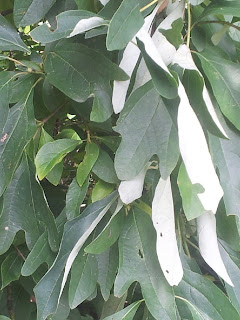 |
| Ham and Potato Soup and Turkey Broth |
Several years ago I would have tossed the leftover holiday turkey bones without a second thought. That was before I realized their true value! Making and canning broth not only saves you money but you get to control the flavor and nutrition. I have discovered that it far surpasses the bland and weak store bought varieties.
Throughout November and December there are numerous opportunities to purchase cheap turkeys. So by the time Christmas is over, I have accumulated four carcasses in my freezer (sounds a little scary put like that). I have also been saving end cuts of onions, leeks, garlic, peppers, etc. in a little freezer bag just for broth making purposes. Oh, and you remember all those great Halloween pumpkins? After the holiday, I diced and canned most of them and chopped a few up to freeze. These make great additions. I also recently picked some wild mustard which I included. Additionally, I added some dehydrated chives and Kudzu leaves.
 |
| Frozen turkey bones and added vegetables before water added. |
Prepare your pressure canner and ready your jars and lids. When ready to can, drain to remove solids. Some people prefer to refrigerate their broth over night so that they can skim any extra fat which gels on top and then reheat to can. I will skim whatever fat I see after cooking, but I do not worry so much about removing all fat. Pour into your jars and wipe rim of jar with paper towel which you wet with water and vinegar to help remove oils. Place lids on finger tight.
Fill your pressure canner with your jars. For pints, pc 20 minutes at 10 lbs, and for quarts pc 25 minutes at 10 lbs.
If you are making a large amount of broth at once like what I am doing, you may want to use some of it to make some soup with your holiday leftovers. I recently purchased 20 lbs of potatoes for $4 which I used to make ham and potato soup with my leftover holiday smoked ham. Here's a little secret about canning potatoes. You do not need to precook them to can. When you peel and dice them, drop them into a bowl of water with lemon juice and salt. Soak. Drain and refill at least two times. This helps remove the starch so you do not end up with cloudy potatoes. It is also something to do while making the broth. I prefer this method because precooking and then pressure cooking make them too mushy in my opinion.
Holiday Ham and Potato Soup
Potatoes, pealed and diced
Ham, cubed
Carrots, skinned and cut
Butternut squash, peeled and diced
Broth
In a quart jar, layer potatoes until half full. Add several tablespoons of diced ham. Fill remainder of jar with carrots and squash. Pour in hot broth and wipe rim of jar with paper towel which you wet with water and vinegar to help remove oils. Place lids on finger tight.
Fill your pressure canner with your jars. For pints, pc 75 minutes at 10 lbs and for quarts, pc 90 minutes at 10 lbs.
To prepare, you can eat as is or add cream or cream of whatever soup to give it a creamier texture.
Enjoy!















































